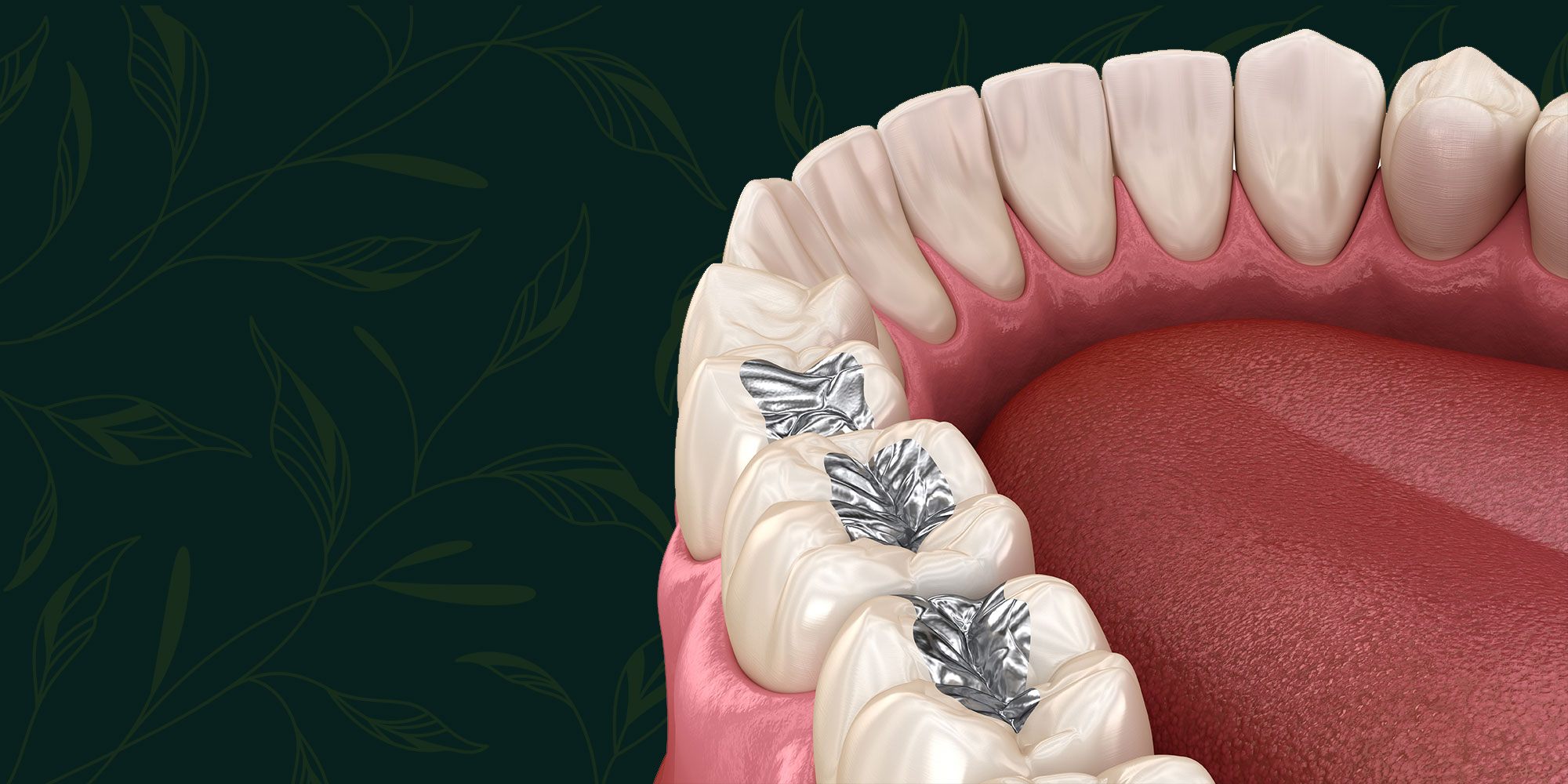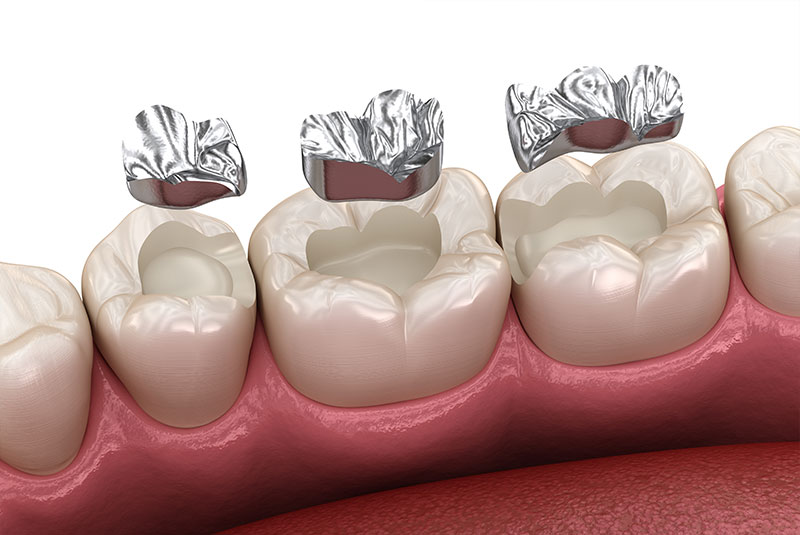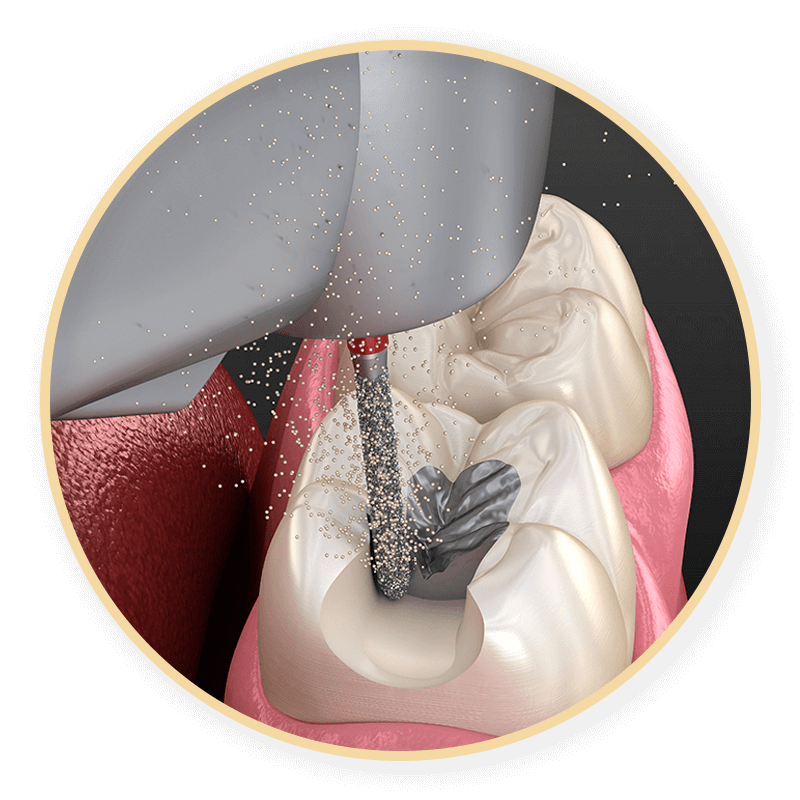

SAFE Amalgam Removal - Woodlands, TX
Ensure a Healthier Smile with Safe Amalgam Fillings Removal.
The Importance of Safe Mercury Filling Removal
Amalgam fillings are dental restorations made from a mixture of metals, including mercury, silver, tin, and copper. Over time, the exposed surface of silver amalgam fillings changes, causing corrosion and roughening of the surface texture. Mercury vapor can be released from these amalgam fillings by chewing grains, nuts, seeds, and gum, as detected by mercury vapor analyzers. At Dental Specialists and Implant Center, we never use amalgam fillings and take their removal and your health seriously!
Even though very few dentists still use amalgam fillings, millions of people still have old amalgam fillings in their mouths. If you’re in this group, you may wonder about removing silver fillings in The Woodlands, TX, and replacing them with biocompatible composite fillings. Your oral health and safety are our top priority, and we’re happy to provide a modern alternative that restores your teeth and promotes overall wellness.
Research Supports Safe Removal of Mercury Amalgam Fillings
- All dental amalgam restorations contain approximately 50% mercury, and reports and research show that these fillings emit mercury vapors.
- Scientific research demonstrates that dental amalgam exposes dental professionals, dental staff, dental patients, and fetuses to releases of mercury vapor, mercury-containing particulate, and other forms of mercury contamination.
- It has been reported that the mercury concentration in the blood of the fetus can be 30 times greater than in the mother's blood. Therefore, amalgam filling removal is not performed in pregnant or breastfeeding women.
- Mercury vapor is released from dental amalgam fillings at higher rates during brushing, cleaning, clenching of teeth, chewing, etc. Mercury is also known to be released during the placement, replacement, and removal of amalgam fillings.


IAOMT Recommendations for Safe Mercury Filling Removal
Based on up-to-date scientific research, the International Academy of Oral Medicine and Toxicology (IAOMT) has developed rigorous recommendations for safe mercury filling removal to reduce mercury exposure’s potential negative health outcomes for patients, dental professionals, dental students, office staff, and others.
Their recommendations build upon traditional safe amalgam fillings removal techniques, such as using masks, water irrigation, and high-volume suction, by supplementing these strategies with several additional protective measures.

Who Is at Risk with Amalgam Fillings?
Although it hasn’t been conclusively proven that exposure to mercury from intact dental amalgam fillings leads to adverse health effects in the general population, the FDA states that it does pose a greater health risk in these cases:
- Pregnant women and developing fetuses
- Planning on becoming pregnant
- Nursing women and their newborns and infants
- Children, especially those younger than age 6
- Preexisting neurological disease
- Impaired kidney function
- Known heightened sensitivity to mercury or silver, copper, and tin in dental amalgam

Safe Mercury Amalgam Removal Technique (SMART) from the IAOMT
The International Academy of Oral Medicine and Toxicology (IAOMT) is a global network of dentists, health professionals, and scientists who research the biocompatibility of dental products, including the risks of mercury fillings, fluoride, root canals, and jawbone osteonecrosis.
As a holistic and biological periodontal and implant practice, Dr. Adriana Wells believes in the intrinsic connection between oral and systemic health and offers the safest dental treatments. She is an IAOMT dentist trained in SMART, so if you require amalgam filling removal in The Woodlands, TX, you’ve chosen the right practice to protect your oral and general health!
The FDA advises against removing intact mercury amalgam fillings because doing so results in unnecessary loss of healthy tooth structure and exposure to a temporary increase in dangerous mercury vapor. The IAOMT says that drilling out amalgam fillings liberates quantities of mercury vapor and fine particulates that can be inhaled and absorbed through the lungs, potentially harming patients, dentists, dental workers, and their fetuses.
Protect Your Smile and Life with Safe Amalgam Removal
At Dental Specialists and Implant Center, we want every visit to our practice to be comfortable, safe, and empowering. By considering your whole health, we provide the essential dental care you need and the confidence it is beneficial for the rest of your body.
As a SMART-trained dentist, Dr. Wells stays up-to-date on applying IAOMT’s rigorous safety measures, including using specific equipment to protect you and our team from the dangers of mercury vapors. Rest assured, if you require mercury filling removal in The Woodlands, TX, you couldn’t be in safer hands!
Improve Your Smile While Protecting Your Overall Health!
Schedule a visit and ask about SMART.

